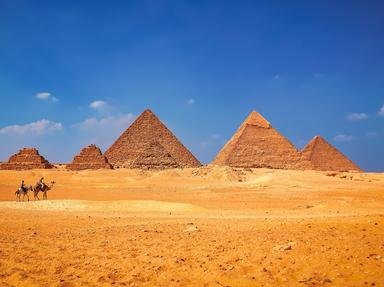Quiz Answer Key and Fun Facts
1. A wealthy ancient Egyptian would want to have a long funeral procession. The group would gather at the home of the deceased and make its way toward the Nile River. How was it insured that enough people would be there to mourn?
2. At the head of the funeral procession there would be servants carrying flowers, food, jars of unguents and shabti boxes. What was a shabti in ancient Egypt?
3. After the group carrying furniture, chariots, and maybe even leading a favorite horse, would follow those who carried the canopic chest. What did the canopic chest contain?
4. The burials of the earliest pharaohs show signs of human sacrifice.
5. Several priests would accompany the ancient Egyptian funeral procession, but there was a sem-priest, or priest in charge. How was he distinguished from the other priests?
6. How did the ancient Egyptian funeral procession complete its journey to the cemetery?
7. What was the name of the ceremony performed by the ancient Egyptian sem-priest right before burial?
8. What object, which was believed to restore virility to the dead Egyptian, was presented to the mummy's mouth?
9. The ancient Egyptians prepared a funeral feast for the mourners and other people in the funeral procession. Where was it usually eaten?
10. What are the early mud-brick and stone tombs built by the ancient Egyptians called?
Source: Author
ponycargirl
This quiz was reviewed by FunTrivia editor
bloomsby before going online.
Any errors found in FunTrivia content are routinely corrected through our feedback system.

